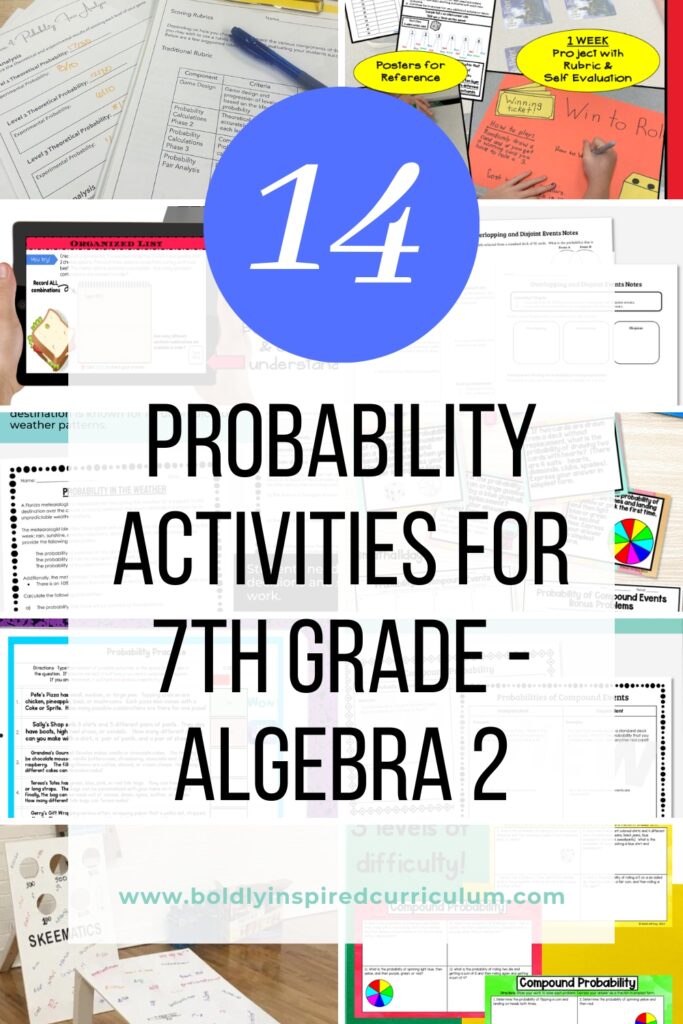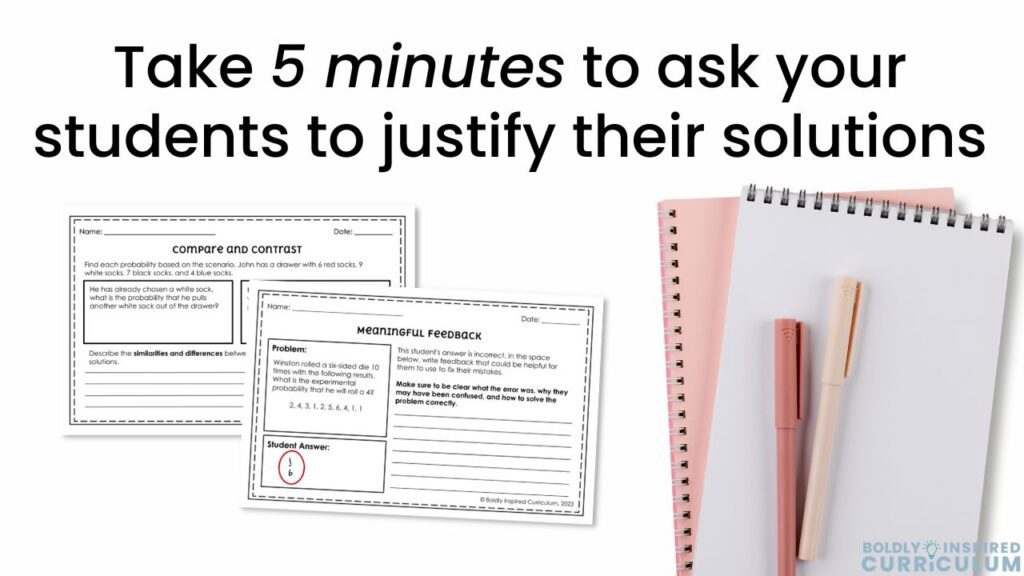
Your probability unit has the potential to be the most fun and engaging topic in your 7th grade or Algebra 2 classroom. This curated list of probability activities is guaranteed to get your students excited about coming to math class again!
Whether you are looking to introduce theoretical and experimental probability to your 7th grade math students or challenge your Algebra 2 students with conditional probability, you will find what you are looking for. Explore all 15 resources or jump to a specific activity in the table of contents below.

Table of Contents

Introduce theoretical and experimental probability with these scaffolded notes and practice worksheets. This no-prep lesson plan is complete with vocabulary, visuals , and example problems for finding sample spaces and calculating probability.

Disjoint and overlapping events can be confusing for many middle and high school students. This set of guided notes and worksheets for compound probability uses visuals to help students differentiate between the two types of events. This print and go probability lesson plan includes two pages of notes, two pages of practice problems, and complete answer keys for easy assessment.

There’s no better way to supplement your guided notes than with graphic organizers to help your students keep track of the different types of events and probability formulas. When completed, they are easy to read and keep the students’ notes organized.
There are two sets of this graphic organizer: independent vs. dependent events and overlapping vs. disjoint events. Each set also includes two different versions so that they can be used as guided notes or an independent review activity.


This 7th grade probability practice will give your students the chance to practice making tree diagrams and using the multiplication counting principle with 6 different real world scenarios!
Make finding probability fun with digital Boom Cards! Students will solve 20 cards in this deck for probability. This activity includes short answer and multiple choice questions for simple probability, independent/dependent events, and sample space.

This scaffolded digital (or printable) activity will challenge your students to determine the probability of compound events with and without replacement in dependent and independent events. Examples include typical probability events, such as flipping a coin, using a standard deck of cards, spinners, and more. The problems get more difficult as the student works through differentiated levels of practice.


This three day digital interactive guided lesson for compound probability uses organized lists, tree diagrams, & tables to introduce independent and dependent events. By the end of this lesson, your students will have progressed to solving real world problems independently.
This probability lesson plan includes hyperlinked video tutorials, scaffolded slides with assisted practice, and two independent practice worksheets.

Get your Algebra 1 students thinking critically with math writing prompts . Each problem can be used for a warm up, exit ticket, or math journal and is tailored specifically to compound probability . The questions cover overlapping and disjoint (mutually exclusive) events, independent and dependent events, and conditional probability .

In this action packed activity , your students will practice determining the probability of compound events using situations with flipping a coin, using spinners, a deck of 52 cards, rolling dice, and more. Students will complete a variety of word problems that use real world situations to determine the compound probabilities as fractions in simplest form.

In this real-world application of compound probability, your students will calculate probabilities of independent events, dependent events and conditional probability .
This activity tasks your students with creating a social media marketing strategy for a local small business. They will calculate probabilities using the platform’s analytics to determine the content that will generate the greatest return on investment.
This print and go application includes three pages of student material, critical thinking questions, answer keys, and can be done in groups or as an individual, alternative assessment .

Real life applications are an essential part of any curriculum, but can often intimidate students. This activity offers scaffolding to support students as they learn to solve word problems and navigate the problem solving process.
This real world application challenges your students to predict the weather for a popular tourist destination in Florida. They will calculate probabilities of rain, sunshine, thunderstorms, and hurricanes to help the tourists determine their weekend plans.
You can use this activity for collaborative group work or as a stand-alone formative assessment for calculating compound probability!


Your students will work in groups to create a carnival game , then calculate the probability of every outcome of their game. Then, the class holds a real carnival! Each group sets their game up and collects data as people play.
Each group will compare the calculated theoretical probability of each outcome to the experimental probability. This project is easily adaptable to multiple grade levels because teachers can require any form of probability in the games.

Everything you need to teach probability through project based learning — including lesson plans, resources, student handouts, and rubrics. Your students will explore the properties of probability as they study the probability of a variety of games!
Your students will engage in active exploration and understanding of theoretical vs experimental probability, the impacts of probability based on independent and dependent events, and determine the fairness of a game. Before ultimately designing a game of their own, your students will make and play a variety of probability based games.
This project culminates with a Probability Fair, where students will set up and play their carnival-style games and gather data to analyze the experimental probability of winning their game.